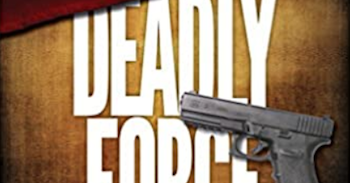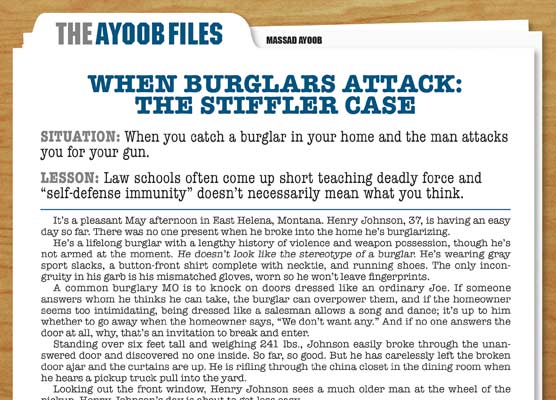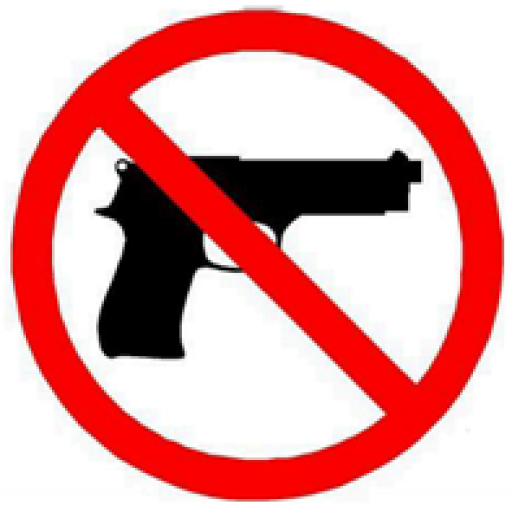- May 17, 2013
- 67,726
- 32,855
- 2,290
Nope.........but I have a gun to sell you.........French.....never been fired and only dropped once.sarcasm- ever heard of it?Ummmm what is so deep here.
Follow along with the video below to see how to install our site as a web app on your home screen.

Note: This feature currently requires accessing the site using the built-in Safari browser.
Nope.........but I have a gun to sell you.........French.....never been fired and only dropped once.sarcasm- ever heard of it?Ummmm what is so deep here.
cool.........play it loud.........I'm hard of hearing now.......I have the ones I want- thanks anyway. I'm spending my money on guitars now days.
I have the ones I want- thanks anyway. I'm spending my money on guitars now days.
Fender Parlor body (cheap one but great sounding), Alvarez AD60, (astonishing sound) Epiphone Dove (limited edition, sounds similar to the Alvarez and is absolutely gorgeous) Ibanez ALT30 in transparent charcoal color and a Fender FA235E- the last 3 are acoustic electric. I prefer the Fender FA235E and the Ibanez for my style of playing. The acoustics of them fit me and my style to a T. They're all made in Indonesia- my next one will be for my soon to be 7 y/o granddaughters birthday in November. I'm leaning toward a 1/2 size Luna in all mahogany. After that a Fishman amp (30 watt) to replace the Roland Mini amp I have.What, specifically? I thinking about a MIM. Don't need it, the 86 Les Paul is my go to. Then I have an Fender Esprit for the meaner single coil sound and an Epiphone Riviera II for a semi-hollow with P90's. Still, a Strat would be nice and the MIM's are said to rival American made.

This criminal justice system views self-defense like a simple light switch: either on or off. Either your actions fall within the law and you have zero criminal liability . . . or it falls outside the law and you are totally liable. There is no middle ground.
If you pass the criminal justice “machine’s” examination, you go free. If not . . . well, you’re probably going to miss some time at work. Maybe your kid’s wedding. Maybe everything. Welcome to the end of your life as you know it. Best, then, to stay well within lawful boundaries. But what are those boundaries? How do you get the support you need to ensure your legal “survival”? Where can you go to get help both before and after a self-defense encounter?
The first step is knowledge and you’ve come to the right place. I wrote the first edition of this book in 1998 because there was no good guide available to non-attorneys. In fact, there wasn’t a good guide available even for attorneys. I had to conduct a great deal of primary research to produce that first edition, and again in 2013 to produce the second edition, and now this volume.
I am sure many of you have heard stories where people defend themselves and have few difficulties afterwards, legal or otherwise. There was that old lady who shot the late-night intruder, or the young woman who killed the rapist dragging her from her car. These might lead you to think, “What do I have to worry about? As far as I can tell, when good people use guns for protection, they’re not even arrested. Isn’t a good shoot a good shoot? I’m fine.”
When good people use guns to defend themselves in the right way and face no legal consequences no one is happier than me. In truth, though, those people avoided a grueling legal fate because someone chose not to prosecute . . . not because they couldn’t have done so. Indeed, in many such cases a trained eye can see where their actions were not lawful self-defense at all. Fortunately for these well intentioned but mistaken defenders, the authorities didn’t choose to prosecute.
But authorities usually do bring serious charges against the well intentioned, but dangerously mistaken, “defender.” Our office gets calls from folks like this all the time. Without exception they are genuinely shocked that they are in trouble. I can practically predict the call. At some point they’ll say, “I can’t believe I was arrested for self-defense!”
One could, of course, go through life willfully ignorant of the law and hope for the best. You could cross your fingers that everyone will see your actions for what they were, even if you failed to jump through all the right hoops. After all, you’re one of the good guys, right? Surely they’ll know that.
And you might, indeed, get lucky. But you are putting your future in other people’s hands. If there is ever a conflict between their interests and yours, they get to choose who wins. Don't be surprised when their choice favors their agenda over yours.
To make matters worse, none of the people who will be in control of your fate will understand what it was like at that desperate moment. Adrenaline was surging through your bloodstream. Your hands were cold and clammy. Your vision was tunneling. Your hearing was shutting down, and you terrifyingly realized that these might be your last moments. In contrast, those judging you will enjoy the perfect safety of a prosecutor’s office or a courtroom with armed bailiffs at each door.
So far as the police and prosecutors are concerned, you’re just another mug shot and case file, not all that different from the rapist they arrested yesterday or the burglar they’ll get tomorrow. Both who, by the way, will proclaim their innocence just as loudly as you. Based on their professional experience, your story is just like all the other self-defense claims. Hollow lies made by career criminals to try to escape justice.
Given that you’ve always thought of yourself as one of the “good guys” it can come as a shock to find yourself disarmed, handcuffed, and dumped in the back of a cruiser. Your new title is now “suspect.” Congratulations. That guy you stopped when he tried to take your life? In the eyes of the law he’s the “victim”.
The officers responding to the scene are not there to be your friend and provide solace after a harrowing experience. They are there to determine if what happened was a crime, and find the bad guy. Unless you live in a very small town, or are prone to get into trouble, these officers will be strangers. To them, you’re just another face among the often unpleasant, and sometimes murderous people they are obliged to deal with every day.
In many jurisdictions, just firing a shot automatically wins you handcuffs and a free ride to the police station for booking. This doesn’t make the police good guys or bad. They’re just people doing their jobs.
The people tasked with prosecuting you also don’t know you. Your file is just one of many hundreds that come across their desk. They will not consider what is in your best interest. They will prosecute you if they think your case is vulnerable. Period. That’s their job.
The judge knows nothing of you personally either. If the prosecution successfully indicts (and, as the author Tom Wolfe so famously put it, a decent prosecutor can get a ham sandwich indicted), then expect to go to trial, spend several hundred thousand dollars in the process, and burn through months to years of your life. All the while with a possible murder conviction hanging over your head and your entire future in doubt.
And then there’s the jury. The jurors will know less about your case, even at the trial’s conclusion, than nearly everybody else involved. The process carefully controls what facts are presented to them. There is a great deal of information known to you, and to the lawyers, and the judge, and the general public for that matter, that the jury will never hear before they render a verdict.
Even if the jury of your peers was given all the evidence favorable to you, that doesn’t mean they’ll see it that way. If you ever have the misfortune to be present during a jury selection process, you’ll get a keen sense that some of your purported “peers” don’t have the collective IQ of a household thermometer. They also are shockingly susceptible to a prosecutor’s tale of wrongdoing. You do not want to place your life in the hands of such people if you can avoid it.
Now, all those treacherous legal waters I just described still assume that everyone is fair and impartial. That is not always the case. A “good bust” can get a cop a promotion; a large investigation can make a detective the Chief. Prosecutors routinely use their position to advance to political office, and those that are elected are politicians already. What better way is there to get favorable press coverage, and lots of it, than to take a big case involving violence? So what if the evidence is a bit wishy-washy around the edges? Even the judge, accustomed to dealing only with local matters, may enjoy that sweet, sweet, 15-minutes of national attention more than you find comfortable.
And it could get even worse than just unfair. Much worse. What if your case raises these people’s political returns beyond anything they could have imagined? What if it provides them with a once-in-a-lifetime opportunity for career advancement? What if, for example, your attacker was someone of a different race than your own? The entire criminal justice process could become racially energized, to the considerable detriment of your due process rights. Indeed, this seems to be the norm now when a defender is of one race and an attacker of another.
The bottom line is that we shouldn’t prepare ourselves for what the criminal justice system might do if favorably disposed to us. We owe it to ourselves and our families to prepare for the worst.
I just painted a very scary portrait of the criminal justice system. Indeed, that was my purpose. The good news is that you can do something to greatly minimize your legal risk. Don’t look vulnerable.
If an arrest isn’t worth the paperwork it won’t happen.
Once the investigation is done, if your case looks fruitless, resources will be assigned to more promising targets. After all, many prosecutors have a conviction rate well above 90% because they don’t pursue cases they don’t think they’ll win.
To avoid being picked as a prosecutor’s pet case you want to look as legally invulnerable to successful prosecution as possible. Even one red flag of weakness in your case will attract prosecution like blood in the water will attract a shark.
So how does one avoid the “red flags?” Obey the law and be prepared with a compelling story of innocence. Sounds simple, right? And yet it’s not actually that simple. The challenge is knowing what the laws you need to follow say, and then how to make your story of innocence match those laws.
I’ve designed this book to help you do just that. I start by describing what the criminal justice system looks like to a defendant at each step. I then deeply analyze the five fundamental, and essential, elements of a self-defense claim. As I go along I give lots of examples where people found themselves in trouble with the law and show you what went wrong. I’ll also talk about the differences between self-defense and defending other people or property.
Then I get REALLY practical. I step you through each and every interaction you will have with the police, and give advice about want to say, and not say, to the various types of law enforcement.
Finally, I bring it all together in Chapter 10: Building a Defense Strategy. I help you position yourself so you can effectively and quickly apply what you learned in this book during the stress of the fight. You’ll end the chapter with a personalized strategy that, to the greatest extent possible, improves your odds of winning both physically and legally.
Perhaps just as useful as the text, if not more, I’ve provided a series of tables at the end of the book that help you understand YOUR state’s laws as they relate to the issues discussed. So, after reading this book, you will have a self-defense strategy that is based on the laws in YOUR state, and that maximizes your odds of enjoying both life and liberty.
Of equal importance, though, is what this book will not do. It will not teach you how to hurt or kill someone and then hide behind a false facade of self-defense. If you are looking for a way to “game” the legal system for such purposes please return the book for a refund because you will be sorely disappointed.
This book will also not turn you into a lawyer. After reading it you will almost certainly know far more about self-defense law than most lawyers you run into. Genuine self-defense cases are too far and few between to accumulate real-world experience (although any criminal defense attorney will have lots of experience arguing bad self-defense cases). So this book will give you far more exposure than most lawyers experience over their entire careers.
That said, preparing and presenting an effective legal defense requires a diversity of skills that we won’t even touch on here. The laws governing evidence and criminal procedure alone take intense study and years of practice. Equally important are the particular facts of your case and the personalities of the prosecutor, judge, and jury. All these are part of the legal arts that only a skilled and experienced criminal defense lawyer has mastered. When the time comes to fight the legal battle that you must get exactly such counsel.
. . .
One last note: It should go without saying that nothing in this book constitutes legal advice, but we live in a madly litigious society so I’ll say it anyway: nothing in this book constitutes legal advice. Self-defense claims depend heavily on the facts of a case, and it is impossible for any general guide to replace the counsel a good lawyer can provide. To paraphrase the medical profession, should this be an emergency, hang up and dial a competent lawyer in the relevant jurisdiction. But it may be useful to bring this book with you to his/her office."


 gunfreezone.net
gunfreezone.net
If you have been reading this blog for a long while, you know I learned this back in 1989 in Venezuela where a bunch of rioters were trying to loot a bodega and the owner dropped at least 4 or 5 and left several wounded in wave after wave of attacks till eventually he had to evacuate with his family and the mob finally “won.” Not a single individual in the mob had any kind of weapon, but that did not stop them. I also learned some other lessons, but we will save them for other day.…I’m sure you’ve heard this before: if you’re surrounded, make the closest one bleed and the rest will probably decide they need to be somewhere else.
As Michael Bane says in his podcast this week, the Kyle Rittenhouse incident says that’s just not true anymore. Kyle was attacked by three separate guys over a period of time; it wasn’t three guys alongside each other that were all in one group; it was spread out in time and space. The second guy, the guy with the skateboard, knew there was gunfire and he knew Kyle had defended himself. Kyle is running away and is chased by this guy. The third guy, the guy with the gun in his right hand until Kyle blew off his biceps, was even farther along in time and he definitely knew that Kyle had already shot the other two guys in self defense. The fact he was using a rifle didn’t slow down any of these guys at all.